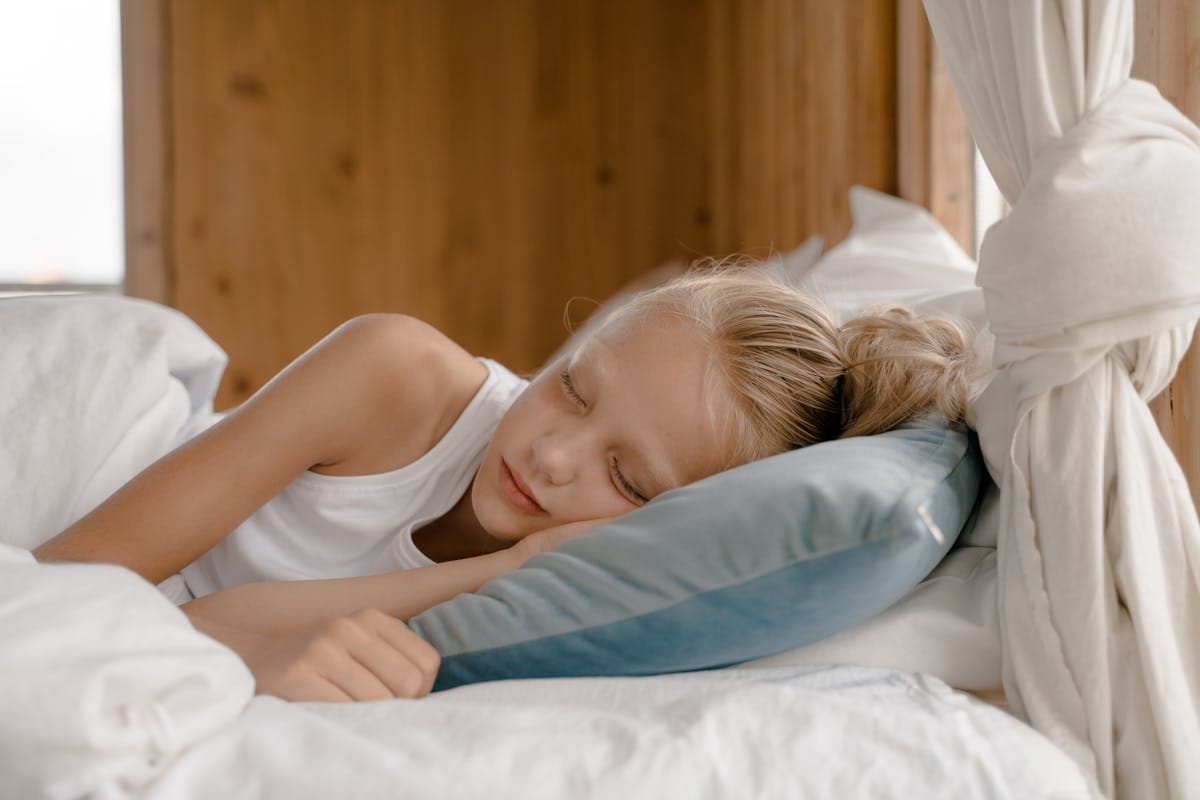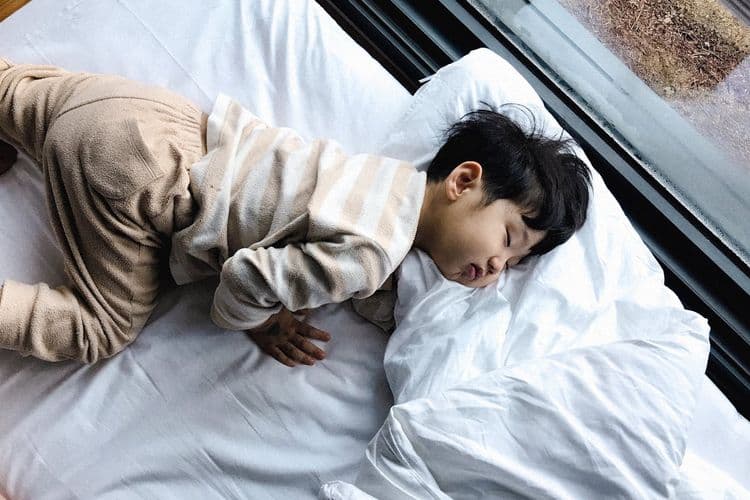Childhood sleep apnea, a sleep disorder characterized by abnormal pauses in breathing or instances of abnormally low breathing during sleep, has been associated with a host of complications, one of which is bed wetting. This link is based on the premise that the interruptions in breathing can interfere with the regulation of urinary function, leading to an overproduction of urine. Although this association has been recognized, the intricacies of this relationship and its implication on the management of both sleep apnea and bed wetting are yet to be fully explored, making this a subject of considerable interest to researchers and clinicians alike.
Understanding Sleep Apnea in Children
While many people associate sleep apnea with adults, it is important to understand that children can also be afflicted by this sleep disorder. This condition alters children’s sleep patterns, leading to breathing irregularities that can disrupt deep sleep. These irregularities often manifest as short pauses in breathing or shallow breathing during sleep. It is essential for parents and caregivers to recognize that these interruptions can greatly impact a child’s overall health and well-being. It’s not simply a matter of poor sleep. Sleep apnea in children can lead to cognitive and behavioral issues, and in severe cases, it can have cardiovascular implications. As a result, understanding and addressing sleep apnea in children is a major health concern.
Common Symptoms of Pediatric Sleep Apnea
In light of the significant health implications of pediatric sleep apnea, it becomes imperative to identify its common symptoms promptly. One of the most noticeable symptoms is disrupted snoring patterns, which may include frequent, loud snoring punctuated by silent periods. During these silent periods, the child may choke or gasp, indicating difficulties in breathing. Another significant symptom is daytime fatigue. Despite having a seemingly adequate amount of sleep, children suffering from sleep apnea often exhibit signs of excessive sleepiness during the day. They may have difficulty paying attention and display irritable or hyperactive behavior. It’s essential to monitor these symptoms closely, as early diagnosis and treatment can prevent potential long-term health risks.
Decoding Child Bed Wetting
Though often dismissed as a normal part of childhood, bedwetting, in fact, can be a symptom of an underlying medical condition. It’s important to understand that bed wetting causes vary from child to child, ranging from deep sleep patterns to slower physiological development. In some cases, urinary tract infections, diabetes, or stress can trigger this nocturnal issue. Remember, the child has no control over this, and it is essential to respond with empathy and patience rather than frustration. Behavioral interventions including positive reinforcement, fluid intake management, and bladder training exercises often show promising results. However, if bed wetting persists beyond the age of 7, seeking professional medical advice is recommended.
The Connection Between Sleep Apnea and Bed Wetting
Given that bed wetting can be a symptom of underlying medical conditions, it is crucial to examine the potential link with sleep apnea, a condition often underdiagnosed in children. Sleep apnea disrupts normal sleep patterns, causing fragmented, non-restful sleep. This disturbance can impact the body’s regulation of urinary function, potentially leading to nighttime bed wetting. Research shows that children with sleep apnea are more likely to experience bed wetting compared to their peers. This correlation may be due to the body’s response to breathing interruptions, which can increase urine production. As a result, understanding the association between these two conditions can help in formulating targeted management strategies, offering relief for the child and their family.
Diagnosis of Sleep Apnea and Bed Wetting
How does one diagnose sleep apnea and bed wetting in children? A thorough approach often includes a detailed medical history, focused on sleep patterns and parental concerns about nocturnal enuresis or bed wetting. A physical examination evaluating for signs of sleep apnea, such as enlarged tonsils, is also essential. However, the gold standard for diagnosing sleep apnea is a sleep study. This non-invasive test monitors breathing, heart rate, oxygen levels, and brain waves during sleep. It effectively identifies periods of breathing cessation, typical of sleep apnea. Although bed wetting is mostly diagnosed based on symptoms and history, ruling out other medical conditions is important. This multifaceted approach guarantees accurate diagnosis, vital for effective treatment planning.

Treatment Options for Sleep Apnea
Once a diagnosis of sleep apnea is confirmed in a child, a number of treatment options can be explored. This can be a challenging time for parents, but understanding the available treatments can provide reassurance.
- Continuous Positive Airway Pressure (CPAP) Therapy: This involves wearing a mask that blows air into the airway to keep it open during sleep.
- Behavioral Interventions: This can involve lifestyle changes such as maintaining a healthy weight and regular sleep hours.
- Oral Appliances: Devices designed to keep the throat open, such as special retainers.
- Surgery: In certain cases, removing tonsils or adenoids may help.
Each option comes with its own benefits and potential risks, which should be discussed with a healthcare professional.
Managing Bed Wetting in Children
While it may be surprising for some, bed wetting in children is a common issue, often linked with sleep disorders like sleep apnea. Managing this concern involves implementing effective bedtime routines and utilizing proven behavioral strategies. Parents can guarantee a regular sleep schedule, limit liquid intake before bed, and encourage frequent bathroom visits. Behavioral strategies can include positive reinforcement, such as rewards for dry nights, to motivate the child. Additionally, using absorbent pads or bed-wetting alarms can provide practical assistance. Each child is unique, so a tailored approach is crucial. It’s important to remember that patience and understanding are key in this process, as it can be a stressful time for both the child and family.
Impact on Quality of Life and Emotional Health
The psychological toll of sleep apnea and bed wetting on children is significant, often impacting their overall quality of life and emotional health. These conditions can lead to various negative outcomes.
- Decreased emotional resilience: Chronic sleep disruption can lead to heightened emotional reactivity and lower resilience to stress.
- Behavioral implications: Children may exhibit increased irritability, aggression, and difficulty concentrating, affecting their social and academic life.
- Self-esteem issues: The stigma associated with bed wetting can lead to feelings of embarrassment and decreased self-esteem.
- Anxiety and depression: The chronic nature of these conditions can potentially lead to long-term mental health issues, such as anxiety and depression.
Understanding these impacts is essential for providing effective support and intervention strategies to these children.
Frequently Asked Questions
What Are the Risk Factors for Developing Sleep Apnea and Bed Wetting in Children?
Risk factors for these conditions include obesity, underscoring a significant obesity connection. Additionally, nasal obstruction can contribute to development, highlighting the importance of addressing any issues with nasal patency in children.
Can Sleep Apnea and Bed Wetting in Children Be Genetically Inherited?
Yes, both conditions can be genetically inherited. Research indicates a genetic predisposition may contribute to these issues, with familial patterns observed in the prevalence of sleep apnea and nocturnal enuresis, commonly known as bed wetting.
What Lifestyle Changes Can Help Manage Sleep Apnea and Bed Wetting in Kids?
Implementing lifestyle modifications such as dietary adjustments and regular physical activity can greatly aid in managing these conditions. Nutritious eating habits and active playtime can promote overall health, potentially alleviating associated symptoms.
How Often Should a Child With Sleep Apnea and Bed Wetting See a Doctor?
A child experiencing these symptoms should have regular medical evaluations. Frequency depends on severity and response to treatment options. However, at least semi-annual check-ups are recommended for monitoring and adjusting the care plan accordingly.
Can Sleep Apnea and Bed Wetting Affect a Childs Performance at School?
Yes, academic performance can be negatively affected due to sleep deprivation. Disrupted sleep may cause fatigue, attention issues, memory impairment, and reduced cognitive function, which can lead to poor school performance and behavioral problems.


